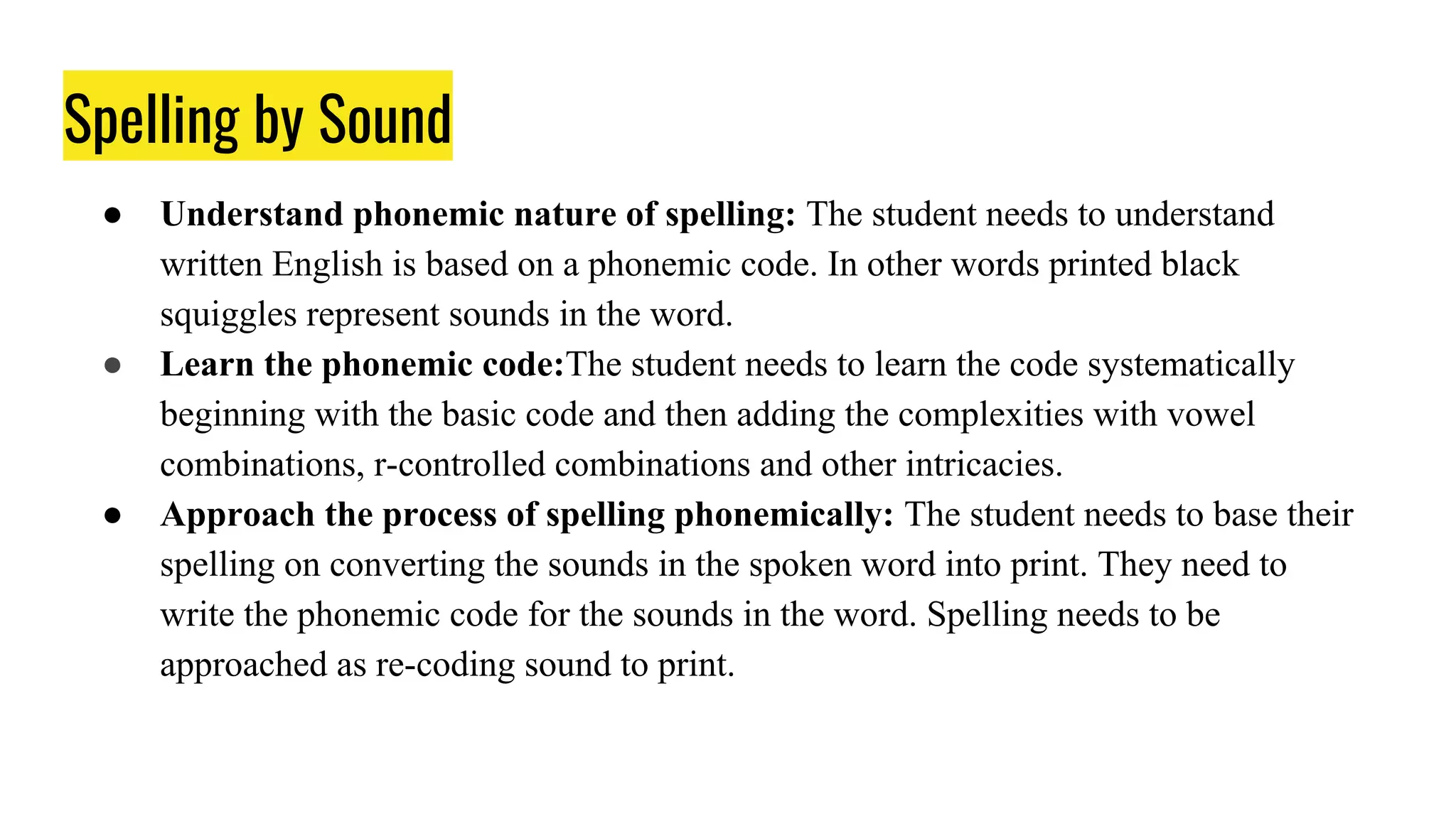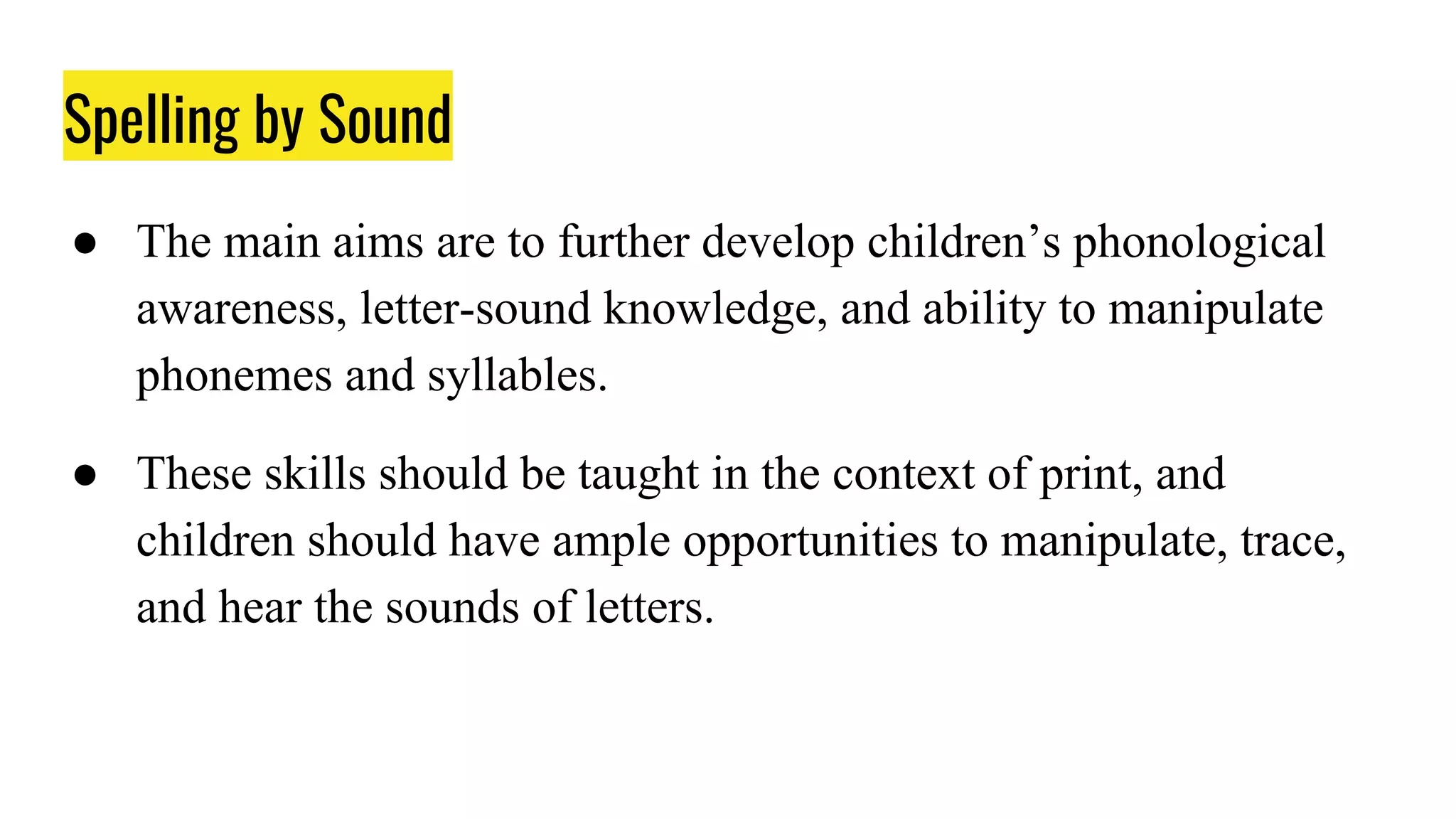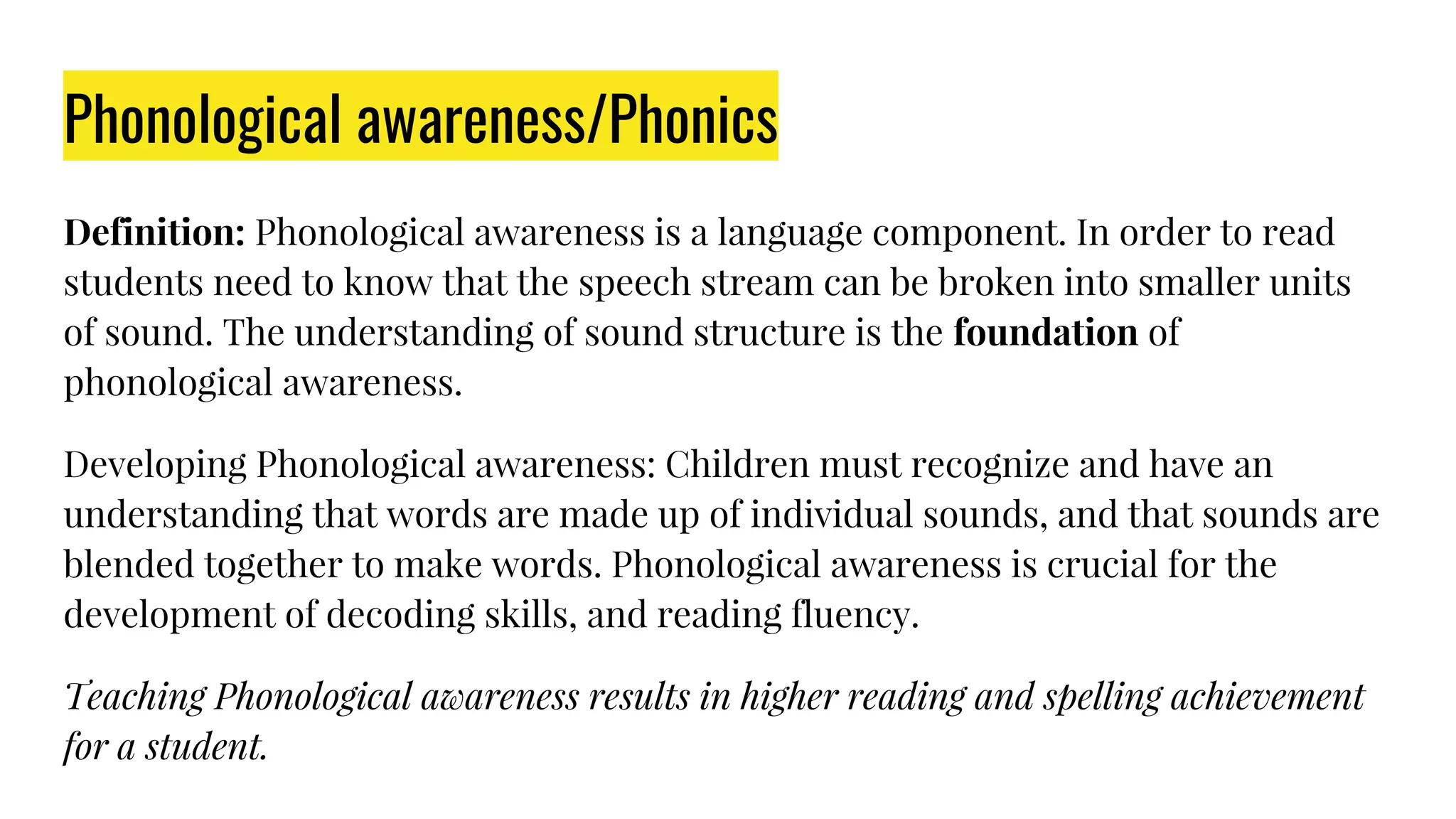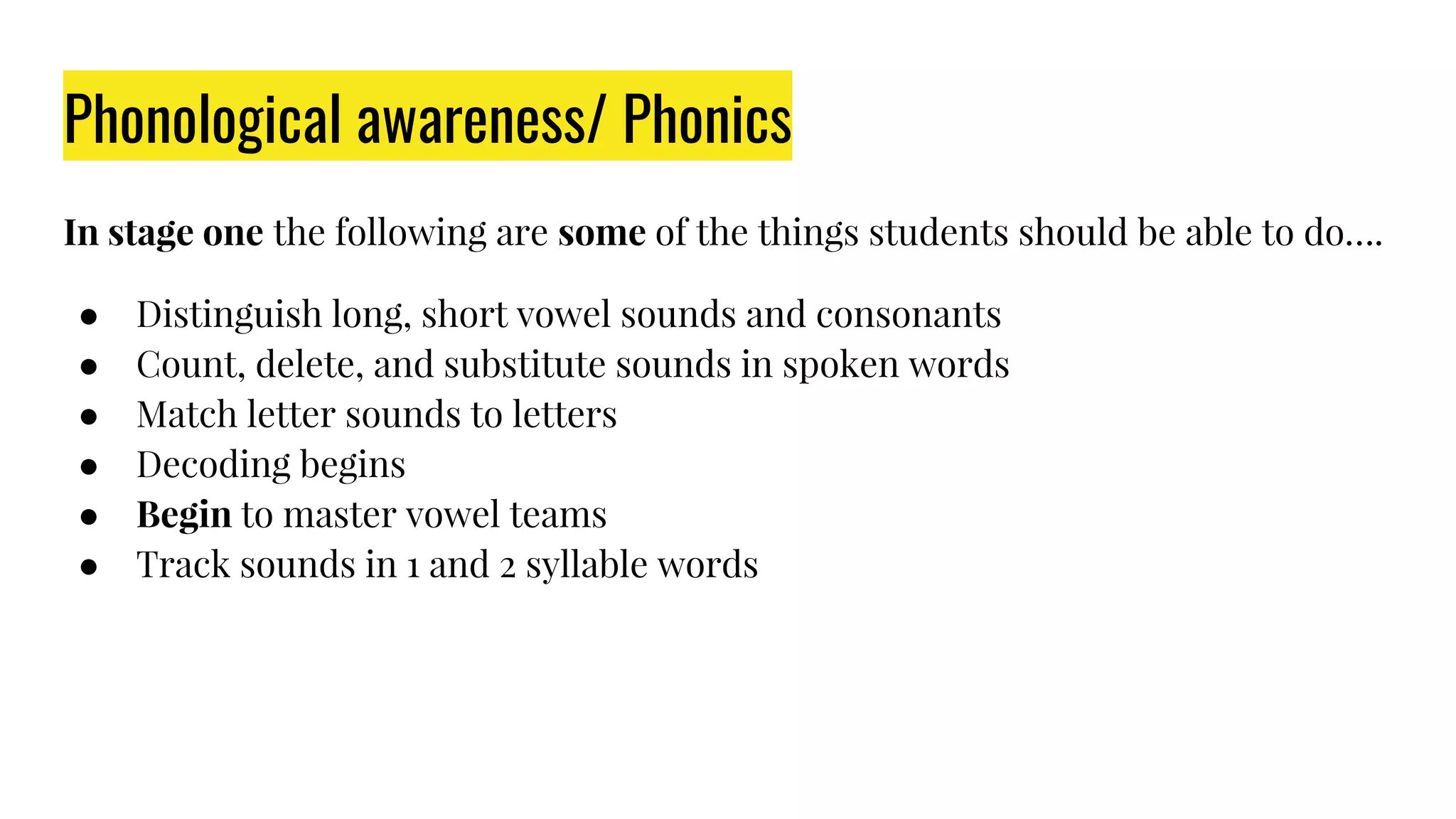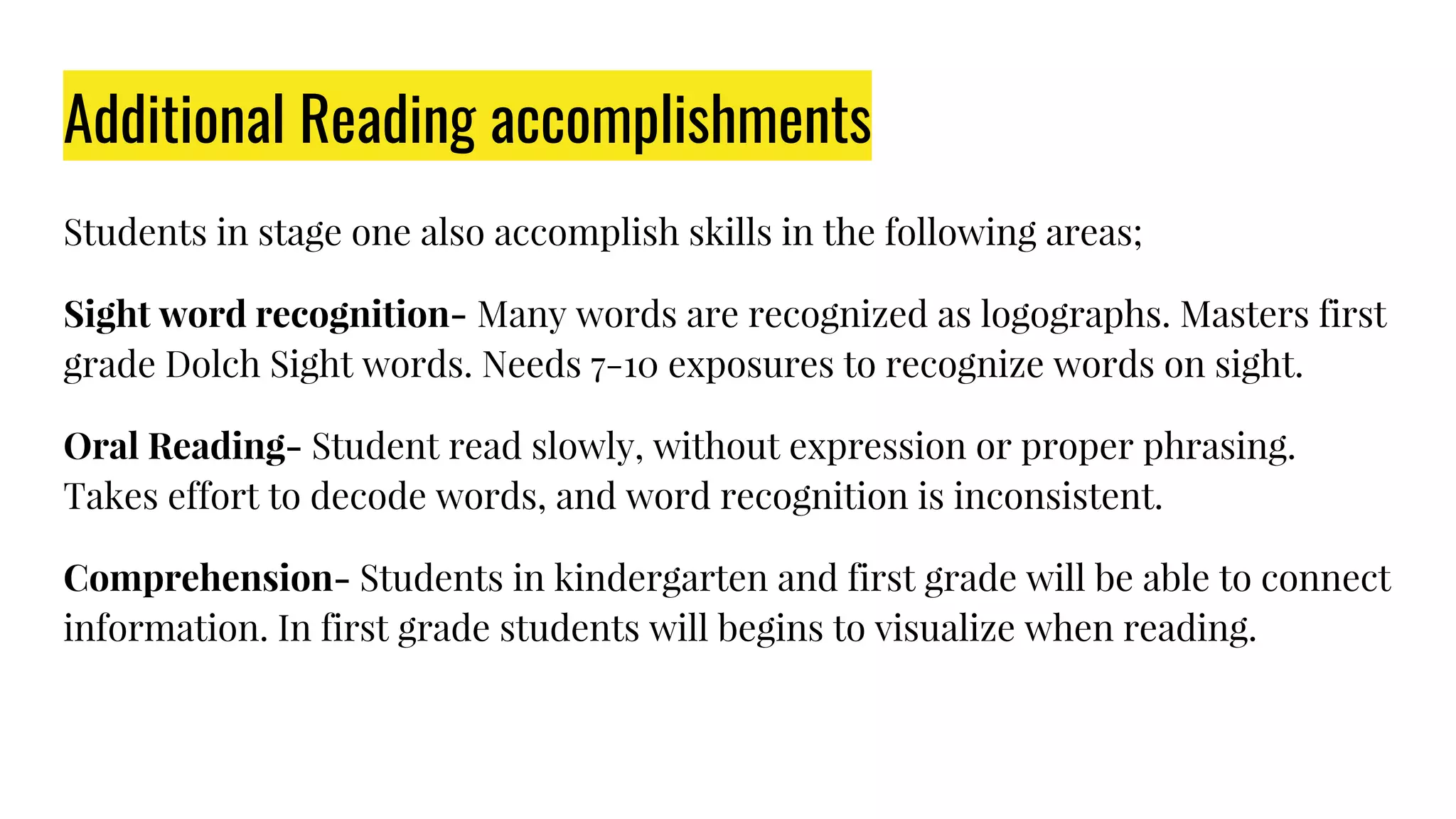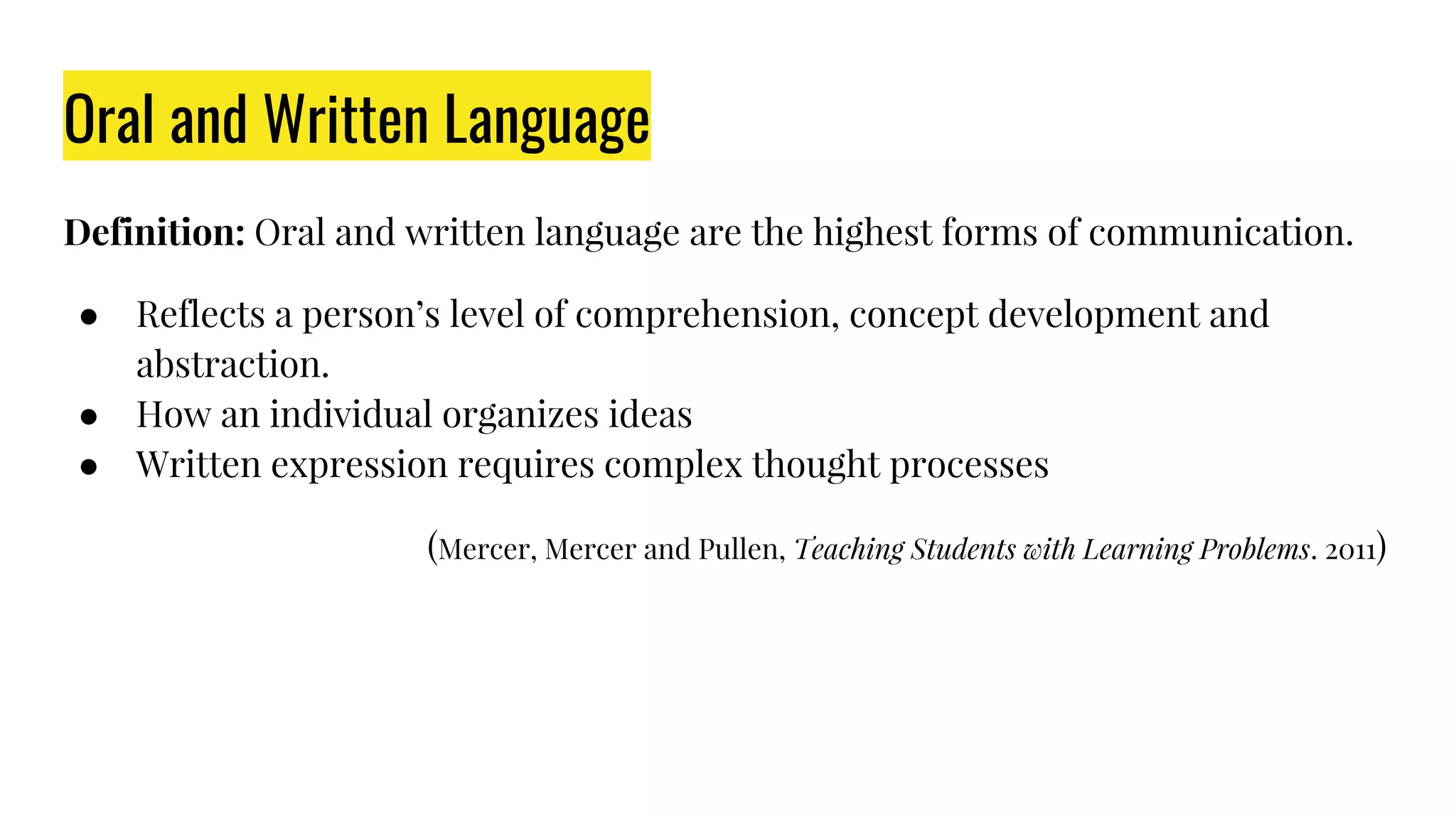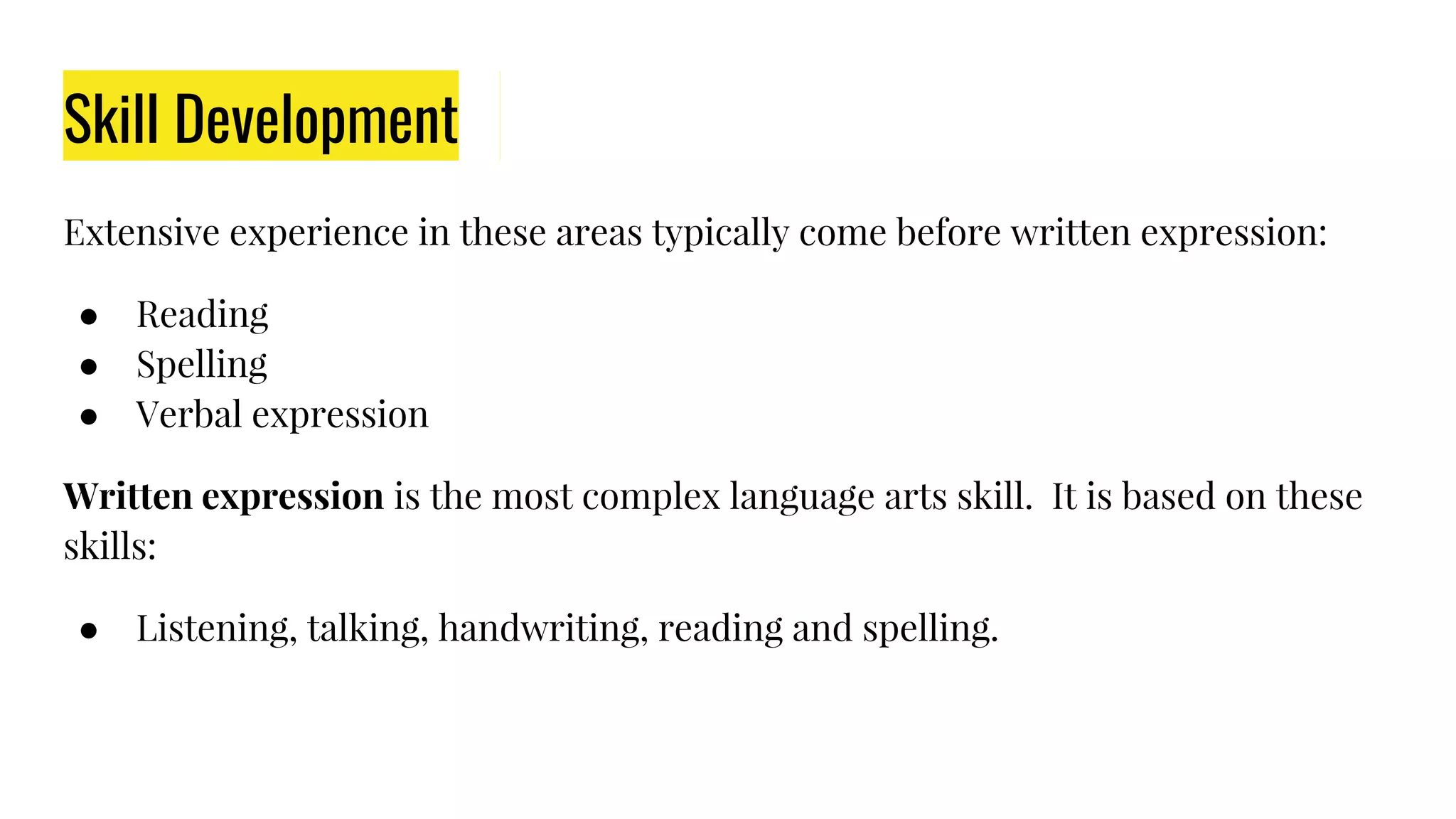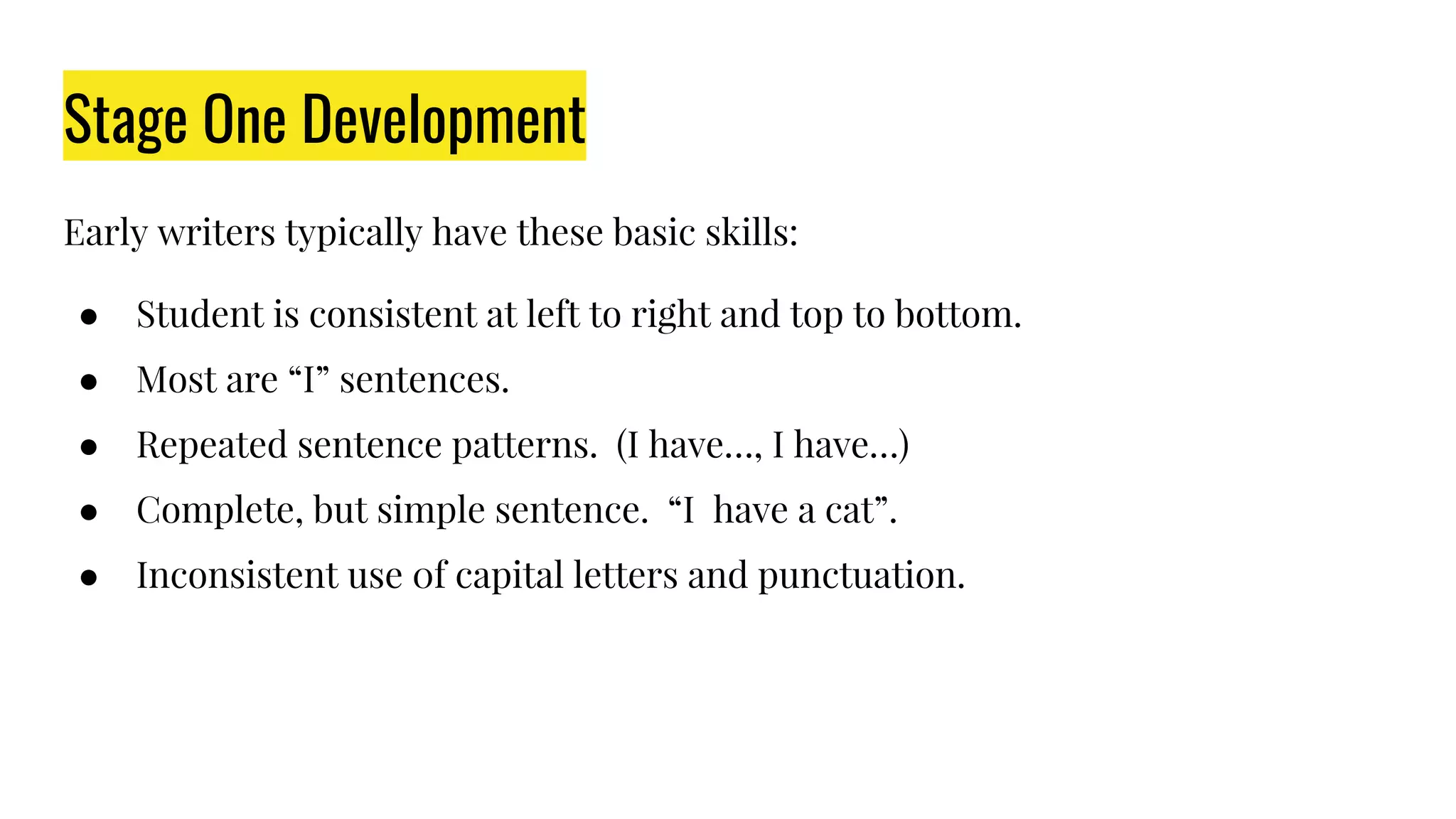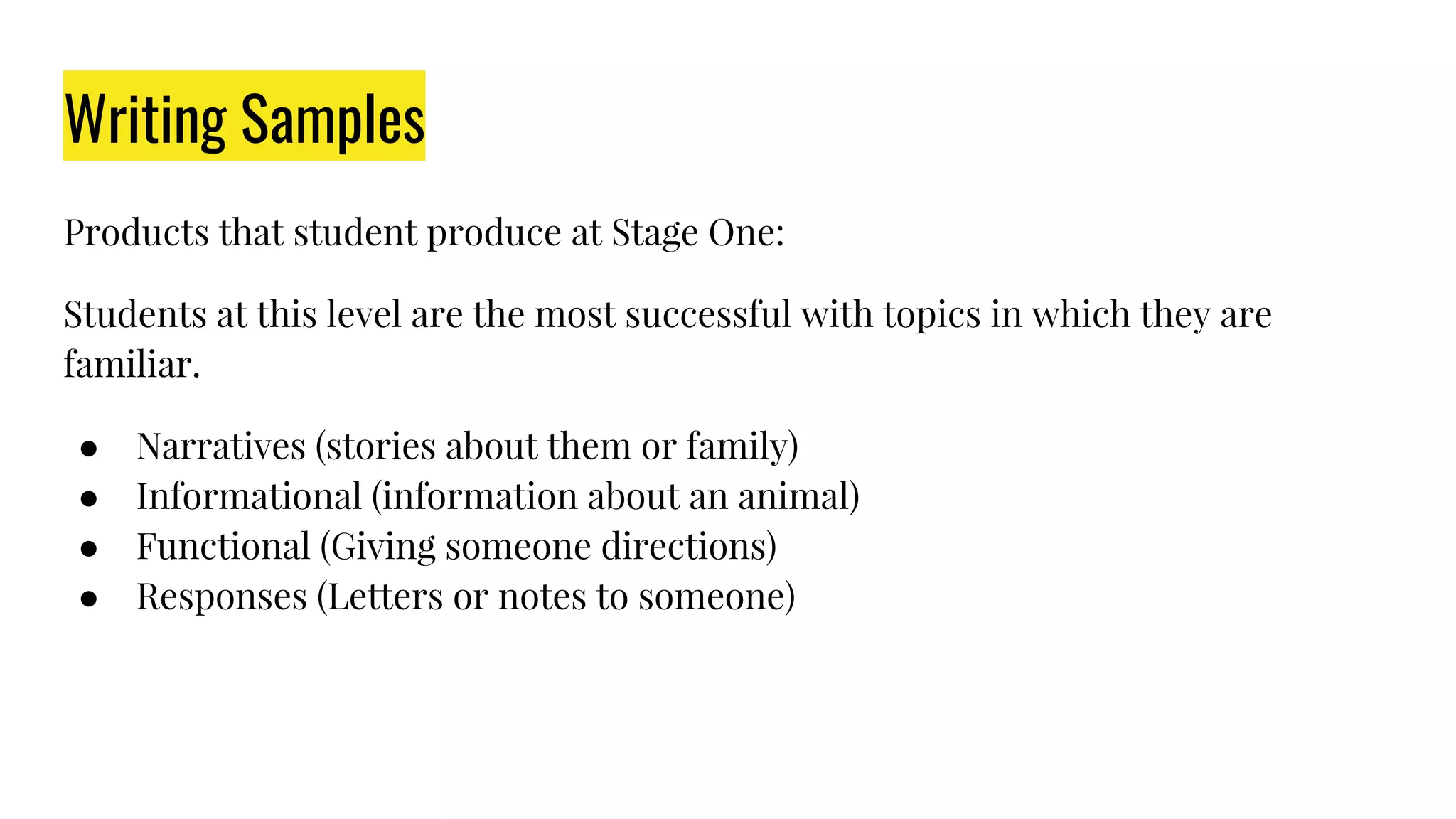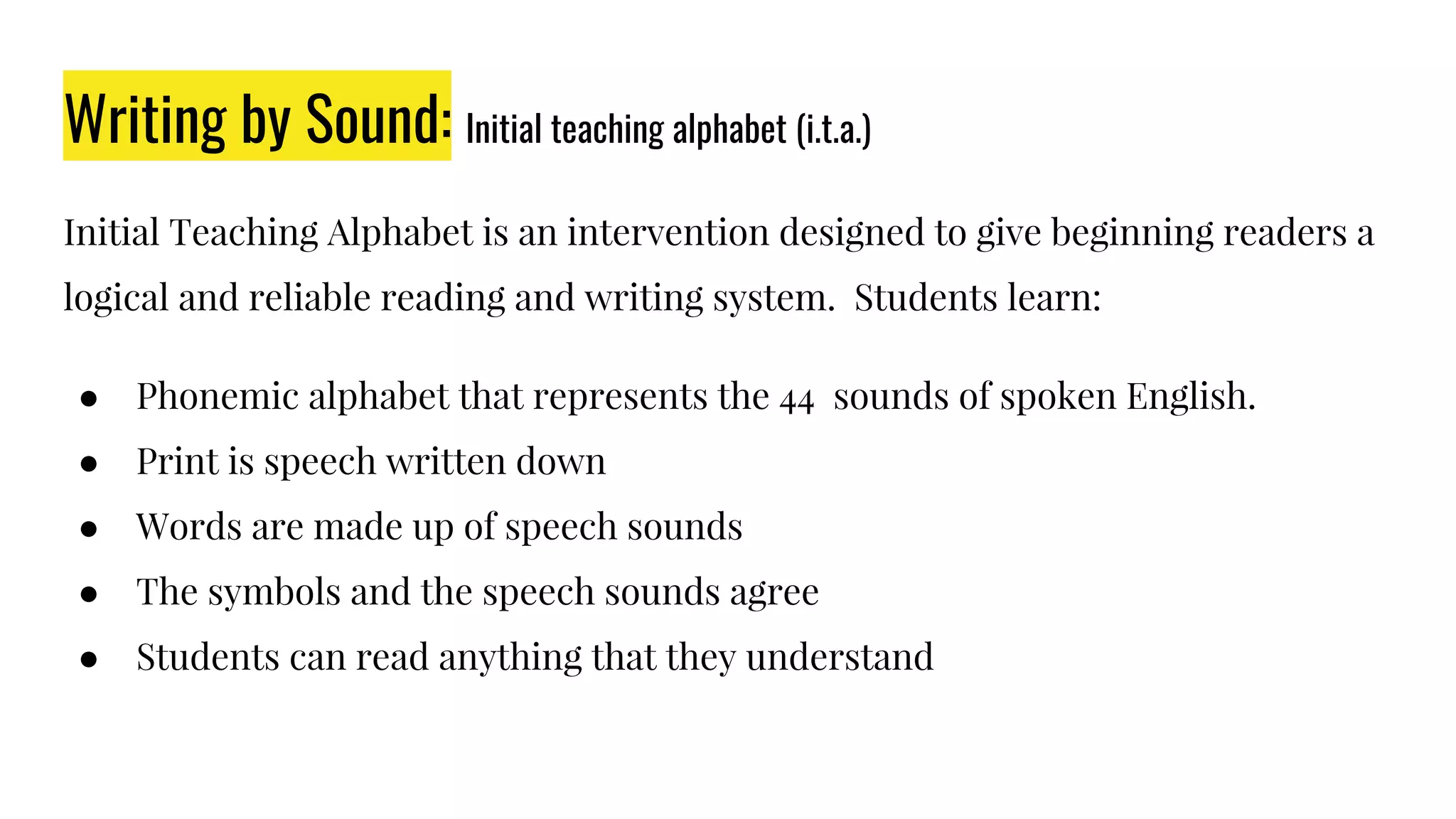This document summarizes literacy development from kindergarten through first grade (Stage One). It covers key areas including spelling development, phonological awareness/phonics, reading accuracy, oral and written language development, and writing. The main goals during this stage are to develop phonemic awareness, letter-sound knowledge, decoding skills, sight word recognition, and the ability to write simple sentences. Instruction focuses on teaching sounds, letter patterns, high-frequency words, and connecting speech to print.


